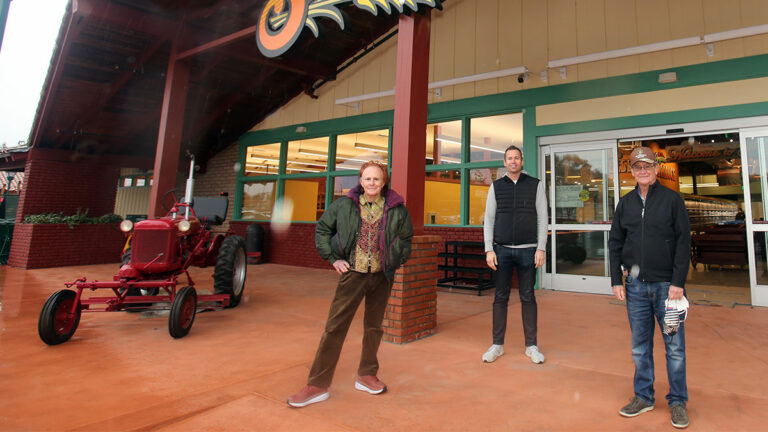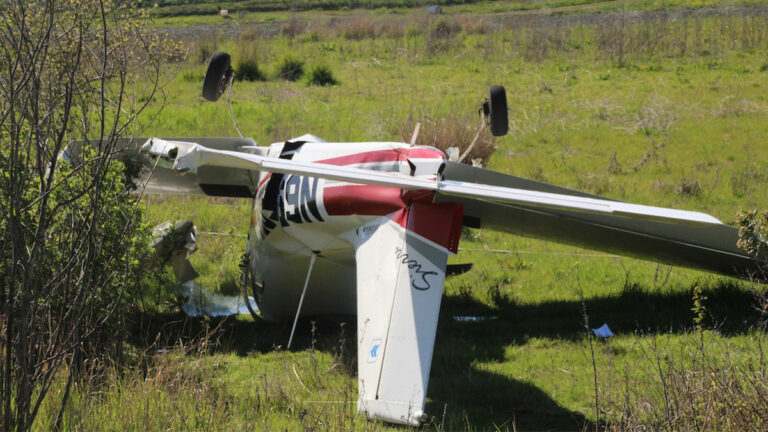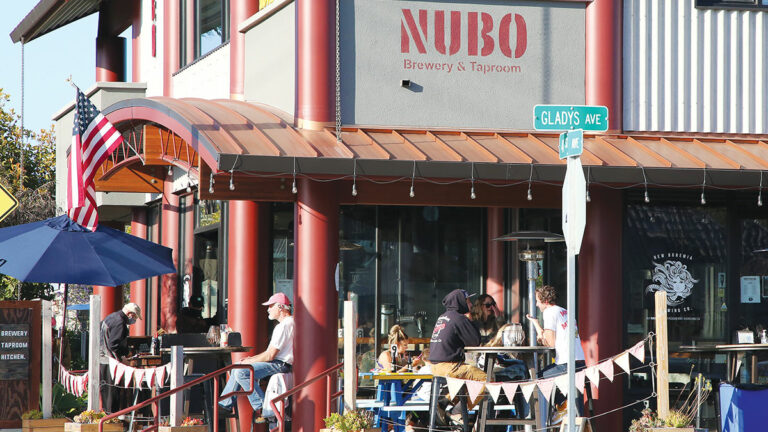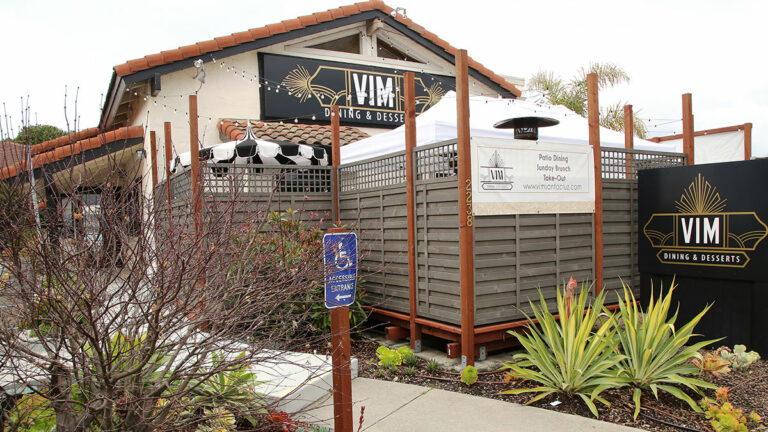For Clark Codiga and Oaktree Property Management, the opening of Staff of Life Natural Foods in Watsonville’s East Lake Village Shopping Center is a moment 10 years in the making.
Nearly a decade ago, the shopping center on the east side of town was roughly 35% vacant, and more recently it became a “food desert” after its previous grocer, Super Max Discount Foods, closed.
Other businesses came knocking on Codiga’s door, looking to possibly fill the roughly 20,000-square-foot building at 906 East Lake Ave. Maybe most notable, Codiga says, was Planet Fitness, the international gym corporation.
“That’s not what we wanted—it’s not what the community wanted,” says Codiga, a partner at Oaktree and the manager of the East Lake Shopping Center.
Staff of Life officially opened its doors Tuesday, bringing with it a wealth of options previously unavailable to Watsonville shoppers hungry for organic and locally produced food. It also rings in a new era for the shopping center that was once a sleepy spot for the nearby older community. That slow-paced, down-home feel is still present, Codiga says, but the center now also offers a broader appeal, with an eclectic mix of businesses.
On a typical Saturday afternoon, Carmona’s BBQ Deli holds live outdoor music performances at one end of the center. On the other side, Fruition Brewing’s patio brings people together with brews and a rotating list of food trucks. Smack in the middle of those two hubs are longtime community businesses such as Bud’s Barber Shop, Hong Kong Garden, the Villager and Watsonville Taekwondo Academy. Relative newcomers Sushi Qu, Coffeeville and Ferrari Florist have also bolstered the center’s attractions to shoppers near and far, Codiga says.
It’s not uncommon for someone to start their Saturday by grabbing a cup of joe at Coffeeville, before buying their yard supplies at Ace Hardware and grabbing lunch from one of the half-dozen or so restaurants there. The only thing that was missing, Codiga says, was a grocer.
“Now with Staff of Life we have that covered—that’s the home run,” he says. “This is what we wanted to give to the community. This was the vision, and we’re happy it’s coming together.”
Local products, local people
Staff of Life grocery store has for a half-century been a backbone of healthy eating and living in Santa Cruz County, selling organic food and natural products long before those concepts hit the mainstream.
Founders Richard Josephson and Gary Bascou launched the business as a tiny organic bakery in 1969, and today the giant flagship store at 1266 Soquel Ave. is one of the few independently owned natural grocery businesses in the county.
Now, just more than two years after announcing they were opening their second location, the expansion into Watsonville is complete. Bascou says he designed the new store to have an open, welcoming feel, where customers immediately have a view of the produce section when they enter. He also wanted to buck the trend of the industrial-style rows of most grocery stores. He says the vibrant colors were inspired by visits to villages in Mexico.
The building has served as a grocery store for decades, but the gleaming interior has been completely remodeled using almost entirely local businesses, and many of the products in the store will come from local providers. In addition, the store worked with the Agriculture History Project and the Pajaro Valley Historical Association on its agricultural-themed decorations. The owners also employed local artists William de Ess Studios, Mott Jordan, Roy Johnson and Art Thomae to help with the decorative touches.
The concept of using local resources comes part-and-parcel with the business’ core philosophy of green living and supporting one’s community, Bascou says. The store is a charter member of Think Local First Santa Cruz, a confederation of small businesses that promotes local products and services.
“We’re locally owned; local people are our customers,” Bascou says. “We want to give back to the community. It’s important for us to stimulate the support of local small and independent businesses, not giant corporate companies.”
Perhaps most importantly, the store will sell organic food, a concept that can be broadly defined, but at its core means that farmers and ranchers use renewable resources, give animals no antibiotics or growth hormones and don’t use most pesticides and synthetic fertilizers on their plants. This is thought to be beneficial for both the people who consume the products and for the environment.
Eventually, the owners hope to hire a nutritionist to help encourage healthy eating, Bascou says.
“We want to bring good, healthy products to the community,” he adds.
Bascou says the store will be similar in many ways to its Santa Cruz location, with a large selection of beer and wine—much of it local—along with an impressively vast variety of bulk goods and groceries. Customers will find a deli and a seafood and meat counter, a bakery, a smoothie bar and quite possibly the only gelato bar in the county.
Josephson says the store’s vast cheese selection comes in part thanks to scouting trips to Europe.
“It will be a selection you will never have seen before in Watsonville, by far,” he says.
























